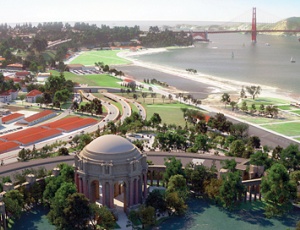California�s Department of Transportation is scrambling to blunt two recent negative reactions to its plan to use a public-private partnership in the second phase of the $1-billion Doyle Drive replacement project, known as Presidio Parkway, in San Francisco.

Earlier this month, in a report issued by the Legislative Analyst�s Office, analyst Mac Taylor concluded that the project is not a �good fit� for a P3, while last week the Professional Engineers in California Government (PECG) was granted a temporary restraining order from an Alameda County superior court judge to prevent Caltrans and the San Francisco County Transportation Authority (SFCTA) from entering into what the union calls �an illegal no-bid public private partnership lease agreement.�
Alameda County Superior Court Judge Wynne Carvill granted in part PECG�s request for a TRO and has scheduled a hearing on the matter on Dec. 30.
Last month, the state of California, Department of Transportation and the San Francisco County Transportation Authority issued a notice of intent to award a public-private partnership project worth $1 billion to a consortium around Essen, Germany-based HOCHTIEF Concessions for the design, construction, finance, operation and maintenance for 33 years of San Francisco�s Presidio Parkway project. The other Golden Link Concessionaire LLC partner in the project is Meridiam Infrastructure, based in Luxemburg.
The consortium�s construction team is led by HOCHTIEF subsidiary Flatiron.
The LAO, meanwhile, has previously recommended that the state use P3 approaches for transportation projects on a pilot basis in order to evaluate the benefits of such procurement approaches.
�However, as we advised the legislature during spring 2010 budget hearings, we do not think the Presidio project is a good fit for a P3 procurement approach because the project is already very far along in its schedule and it does not rely on a toll or user fee to fund the work,� says the report, which was requested by state senator Alan Lowenthal (D-Long Beach).
�Overall, our analysis finds that the Golden Link agreement does not meet all the goals Caltrans intended and is not likely to be a good fiscal deal for the state. In light of these findings, we think that the state should consider not signing the contract with Golden Link, and instead build the project with a more traditional approach.�
The report further states that on a fiscal basis, it is likely that procuring the project with a more traditional procurement approach would result in lower total costs to the state.
�Given the lack of benefits of procuring this particular project under a P3 approach, the state should consider not signing the contract,� says the report. �If the P3 agreement were not signed, the state could still complete the Presidio project on schedule using traditional pay-as-you-go funding. At this early stage, the state would likely be required to pay a minimal stipend to the concessionaire as compensation for the cost of developing their bid.�
Caltrans has not commented on the LAO report or the TRO, but Paul Meyer, executive director of ACEC California, responds that the LAO report actually contains positive conclusions about using the P3 method on Presidio Parkway.
The project itself, says Meyer, saves the state millions of dollars in upfront costs, thereby freeing up transportation funds for other needed projects.
�It also shifts substantial liability from the state to a private entity, which is contractually responsible to promptly design and build the project,� he says. �If the concessionaire fails to perform on-time or to specified standards, the concessionaire will suffer penalties.�
Meyer also says the agreement gives the concessionaire the flexibility to solve construction problems quickly.
�Here the LAO is rightly contrasting this P3 with Caltrans� normal non-P3 system for delivering transportation projects, a system in which resolving construction problems can be a time consuming, bureaucratic process,� he says.

Post a comment to this article
Report Abusive Comment